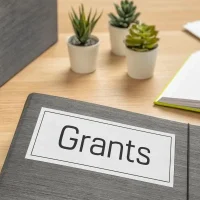In the digital age, social media has emerged as a powerful tool for non-governmental organizations (NGOs) seeking to enhance their visibility, engage with stakeholders, and secure funding through grants. The intersection of social media and grant acquisition presents a unique opportunity for NGOs to not only promote their missions but also to connect with potential funders in innovative ways. As the landscape of philanthropy evolves, understanding how to leverage social media effectively can be a game-changer for organizations striving to make a difference.
Social media platforms such as Facebook, Twitter, LinkedIn, and Instagram offer NGOs a dynamic space to share their stories, showcase their impact, and build relationships with grantmakers. By harnessing these platforms, NGOs can reach a broader audience, engage with supporters, and ultimately increase their chances of securing grants. This article will explore actionable strategies for NGOs to create a robust social media presence, utilize platforms for grant research, engage with grantmakers, showcase their impact, and collaborate with other organizations—all while measuring the effectiveness of their efforts.
Creating a Strong Social Media Presence for NGOs
Establishing a strong social media presence is foundational for NGOs aiming to attract grants and support. The first step is to identify the platforms that align best with the organization’s mission and target audience. For instance, visual-centric platforms like Instagram may be ideal for NGOs focused on environmental conservation or community development, where compelling imagery can tell powerful stories.
Conversely, LinkedIn may be more suitable for organizations that want to connect with professionals and potential funders in the nonprofit sector. Once the appropriate platforms are chosen, NGOs should develop a content strategy that reflects their mission and values. This includes creating a content calendar that outlines what types of posts will be shared, when they will be published, and who will be responsible for creating them.
Engaging content can range from informative articles and infographics to videos showcasing the organization’s work. Consistency is key; regular posting helps maintain visibility and keeps followers engaged. Additionally, NGOs should ensure that their branding—logos, colors, and messaging—is consistent across all platforms to create a cohesive identity.
Utilizing Social Media Platforms for Grant Research
Social media is not just a tool for outreach; it can also serve as a valuable resource for grant research. Many foundations and grantmakers actively share information about funding opportunities on their social media channels. By following these organizations on platforms like Twitter and LinkedIn, NGOs can stay informed about new grants, application deadlines, and specific funding priorities.
This proactive approach allows NGOs to tailor their proposals to align with the interests of potential funders. Moreover, social media can facilitate networking opportunities that may lead to grant acquisition. Engaging with posts from grantmakers or participating in discussions related to funding can help NGOs build relationships with decision-makers.
For example, commenting on a grantmaker’s post about their funding priorities can open the door for further conversation. Additionally, NGOs can use hashtags related to grant opportunities to discover relevant discussions and connect with other organizations that may have insights or experiences to share.
Engaging with Grantmakers on Social Media
Building relationships with grantmakers through social media is essential for NGOs looking to secure funding. Engaging with grantmakers’ content by liking, sharing, or commenting on their posts demonstrates interest and appreciation for their work. This interaction can help NGOs stand out in a crowded field of applicants.
It’s important to approach these interactions authentically; rather than simply seeking funding, NGOs should aim to foster genuine connections based on shared values and goals. Another effective strategy is to participate in Twitter chats or LinkedIn groups focused on philanthropy and nonprofit work. These forums provide an opportunity for NGOs to engage in meaningful conversations with grantmakers and other stakeholders in the sector.
By contributing valuable insights or asking thoughtful questions, NGOs can position themselves as knowledgeable partners in the field. Additionally, sharing updates about the organization’s work or successes can keep grantmakers informed about the impact of their funding and reinforce the value of ongoing support.
Showcasing Impact and Success Stories through Social Media
One of the most compelling ways for NGOs to attract grants is by showcasing their impact through social media. Sharing success stories not only highlights the organization’s achievements but also demonstrates its effectiveness in addressing specific issues. This can be done through various formats, including videos, testimonials from beneficiaries, or case studies that outline the problem addressed, the solution implemented, and the outcomes achieved.
Visual storytelling is particularly powerful on platforms like Instagram and Facebook. For instance, an NGO working on education initiatives might share before-and-after photos of classrooms transformed through their programs, accompanied by narratives from students or teachers about how these changes have positively impacted learning outcomes. By illustrating tangible results, NGOs can create an emotional connection with potential funders who are more likely to invest in organizations that demonstrate clear evidence of success.
Using Social Media for Crowdfunding and Fundraising
In addition to securing grants, social media can be an effective tool for crowdfunding and fundraising efforts. Platforms like GoFundMe or Kickstarter allow NGOs to reach out directly to supporters and solicit donations for specific projects or initiatives. By promoting these campaigns on social media, organizations can tap into their networks and encourage followers to contribute financially.
To maximize the effectiveness of crowdfunding campaigns on social media, NGOs should create compelling narratives that explain why the funds are needed and how they will be used. Engaging visuals—such as infographics or videos—can help convey this message more effectively. Additionally, leveraging social proof by sharing updates on fundraising progress or highlighting contributions from supporters can encourage others to donate as well.
Regularly thanking donors publicly on social media also fosters a sense of community and appreciation among supporters.
Collaborating with Other NGOs and Grantmakers on Social Media
Collaboration is a powerful strategy for NGOs looking to enhance their visibility and increase their chances of securing grants. Social media provides an excellent platform for fostering partnerships with other organizations that share similar missions or goals. By collaborating on campaigns or initiatives, NGOs can pool resources, share audiences, and amplify their messages.
For example, two NGOs working in environmental conservation might join forces for a joint fundraising campaign or awareness initiative. By cross-promoting each other’s content on social media, they can reach a wider audience and attract more attention from potential funders. Additionally, collaborating with grantmakers on social media—such as co-hosting webinars or discussions—can strengthen relationships and demonstrate a commitment to shared goals.
Measuring and Reporting on Social Media Efforts for Grant Acquisition
To ensure that social media efforts are effective in securing grants, NGOs must measure and report on their activities regularly. This involves tracking key performance indicators (KPIs) such as engagement rates, follower growth, website traffic generated from social media links, and conversion rates for fundraising campaigns. Tools like Google Analytics or social media analytics dashboards can provide valuable insights into what content resonates most with audiences.
Reporting these findings not only helps NGOs refine their strategies but also provides valuable data when applying for grants. Many funders appreciate organizations that demonstrate a commitment to evaluation and continuous improvement. By showcasing how social media efforts have contributed to increased visibility or engagement with potential funders, NGOs can strengthen their grant proposals and highlight their effectiveness in utilizing modern tools for outreach.
In conclusion, social media has become an indispensable asset for NGOs seeking grants and funding opportunities. By creating a strong online presence, engaging with grantmakers, showcasing impact stories, utilizing crowdfunding strategies, collaborating with other organizations, and measuring efforts effectively, NGOs can enhance their chances of securing vital resources needed to further their missions. As the landscape of philanthropy continues to evolve, embracing these strategies will empower NGOs to navigate the complexities of funding acquisition in the digital age successfully.
In the ever-evolving landscape of non-governmental organizations (NGOs), leveraging social media to secure funding has become increasingly vital. A related article that complements the strategies discussed in “Top Ways NGOs Can Leverage Social Media to Find Grants” is the announcement of the ISDAO Regional Grant Program – 7th Cycle. This program highlights the importance of regional collaboration and funding opportunities, which can be amplified through effective social media campaigns. By understanding and utilizing these digital platforms, NGOs can enhance their visibility and connect with potential donors, thereby increasing their chances of securing grants like those offered by ISDAO.









































